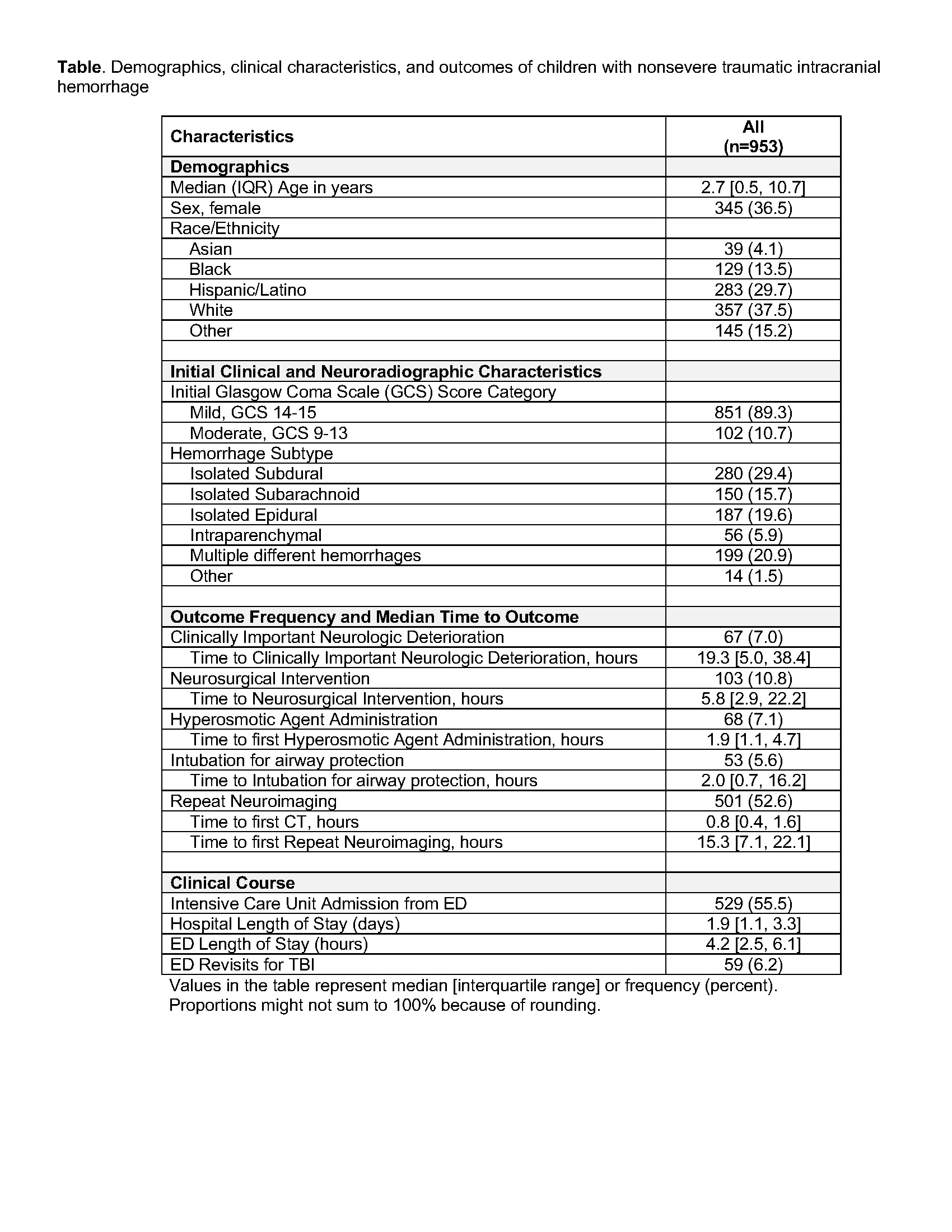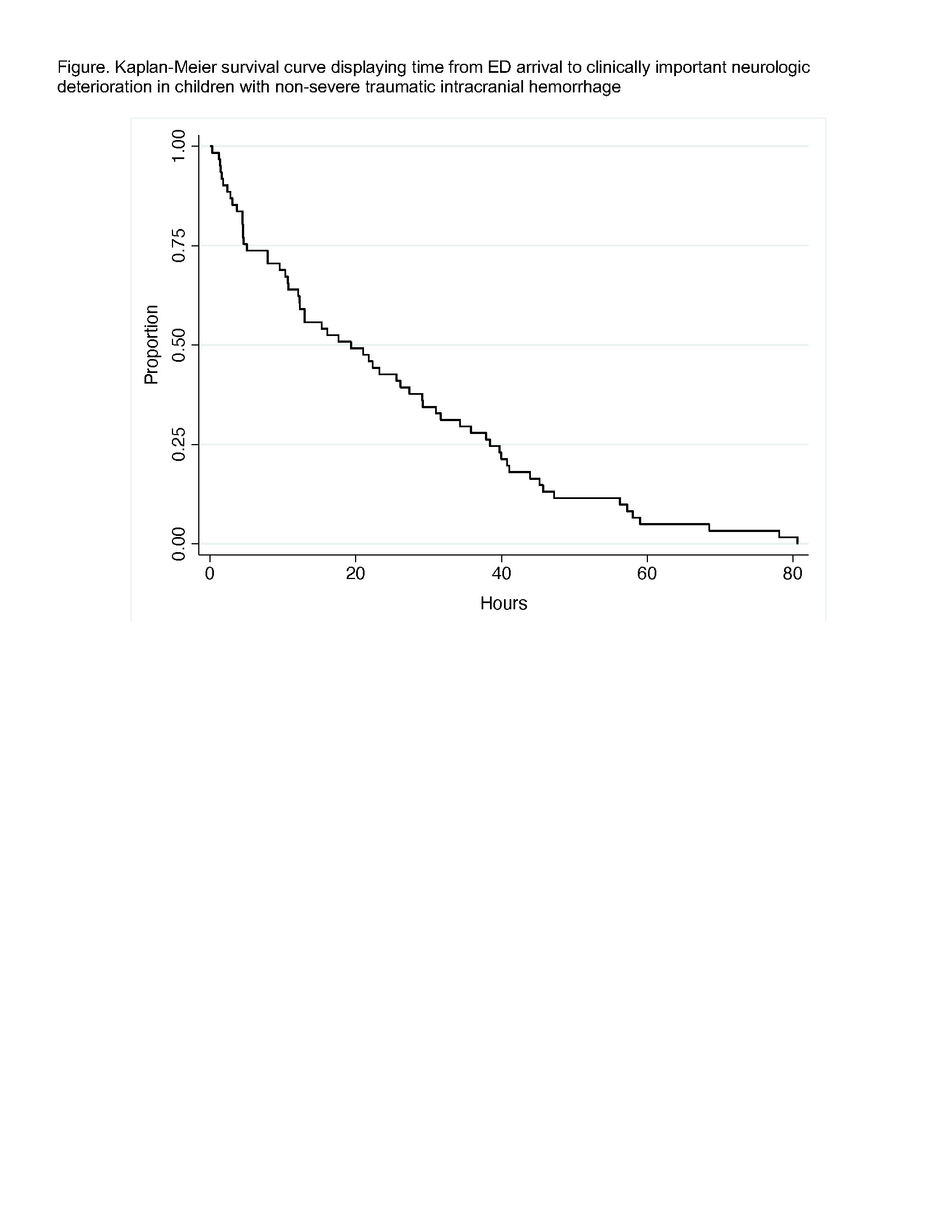Emergency Medicine: All Areas
Emergency Medicine 5 A
325 - When Do Children with Nonsevere Traumatic Intracranial Hemorrhage Deteriorate?
Publication Number: 325.208

Pradip P. Chaudhari, MD (he/him/his)
Attending Physician
Children's Hospital Los Angeles
Los Angeles, California, United States
Presenting Author(s)
Background:
Children with intracranial hemorrhage after blunt head trauma are monitored closely for neurologic deterioration and need for critical intervention. Although uncommon in those initially considered to have non-severe head injury (Glasgow Coma Scales (GCS) >8), the hemorrhage can progress leading to clinical deterioration. Evidence on the timing of deterioration is limited, and therefore the optimal duration and intensity of monitoring are uncertain.
Objective:
Our objective was to describe the timing and rates of neurologic deterioration and critical interventions in children with intracranial hemorrhage from non-severe head injury.
Design/Methods:
We conducted a 12-site retrospective cohort study of children < 18 years old evaluated in pediatric trauma centers from May 2014-March 2021, with neuroradiographic evidence of intracranial hemorrhage due to blunt trauma, and with initial GCS >8. Data were abstracted from the electronic health record. The primary outcome was clinically important neurologic deterioration (new or worsening signs/symptoms with an acute change in management, including critical interventions, non-routine neuroimaging, change in monitoring status, emergent antiepileptic drug administration) within 96 hours of ED arrival. We determined timing of outcomes and described resource utilization data including intensive care unit (ICU) admission, repeat neuroimaging, and ED and hospital length-of-stay.
Results:
We studied 953 children, with a median (IQR) age of 2.7 (0.5, 10.7) years (Table). Initial GCS was 14-15 in 89.3% (n=851) and 9-13 in 10.7% (n=102). Isolated subdural hemorrhage was the most common hemorrhage subtype in the cohort (29.4%, n=280). Clinically important neurologic deterioration was observed in 7.0% (n=67) of children. Median (IQR) time from ED arrival to deterioration was 19.3 (5.0, 38.4) hours (Table, Figure). Median (IQR) time from arrival to initial neurosurgical intervention was 5.8 (2.0, 22.2) hours. 55.5% (n=529) were admitted to an ICU, and 52.6% (n=501) underwent repeat neuroimaging.
Conclusion(s):
Clinically important deterioration occurred in 7% of children with intracranial hemorrhage after nonsevere head injury, with a median time to deterioration of 19 hours from ED arrival. These time to outcome data can inform more accurate risk stratification and guide duration and type of observation.


